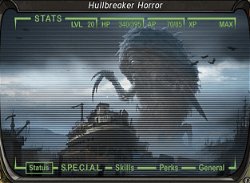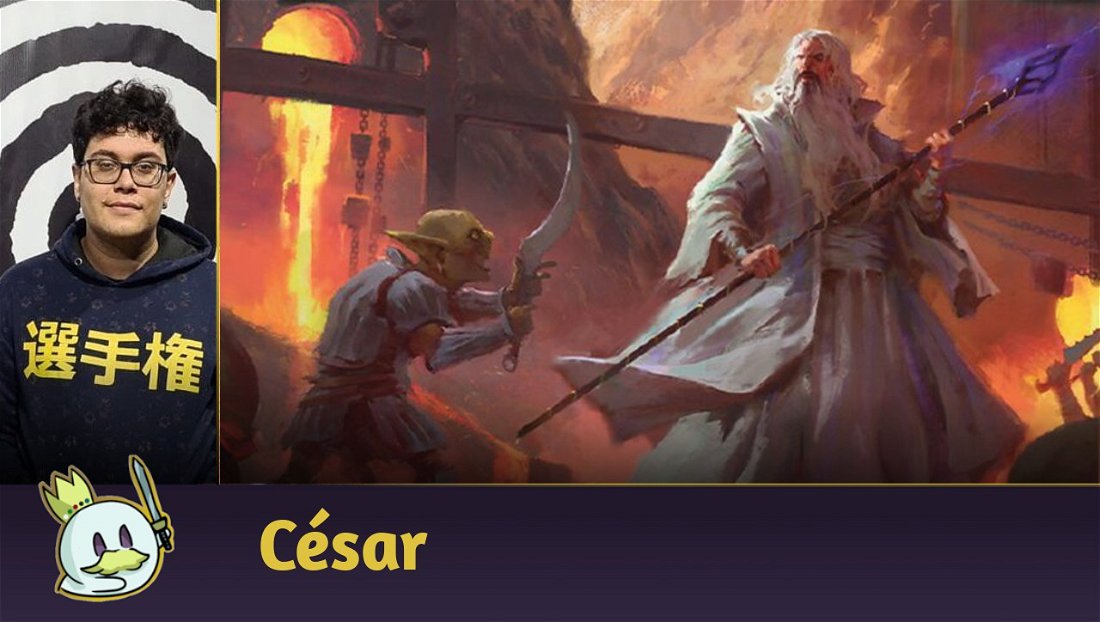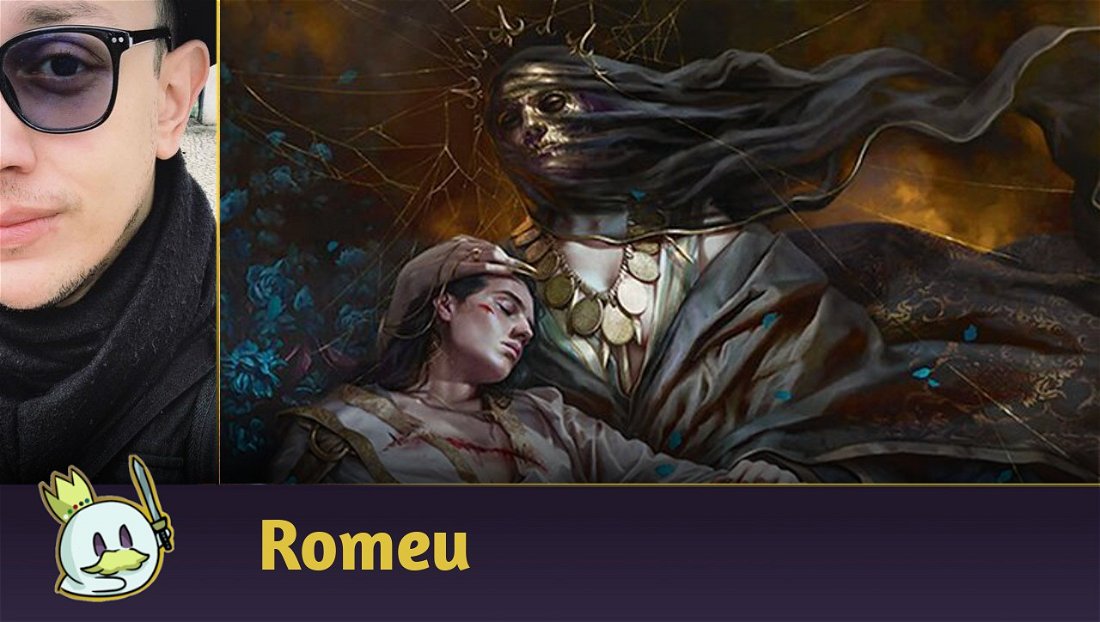Metagame is one of the most peculiar factors of any competitive TCG. Among the countless strategies developed in each expansion, only a select number become part of the game's major events and tournaments. Much of this is due to a mixture of the individual power level in cards from each archetype, coherence in the combination between them and, very often, exploitable gaps in the most famous strategies.
Bant Poison fits into the third category: while its cards have a lot of synergy, their standalone power is extremely low. However, due to the behavior of the current Metagame and its ability to prey on Midranges and Big Mana while they try to fight each other, it has become one of the most solid options for Standard, moving from the Tier 2 to being one of the five decks most played in less than a month.
Ad
What is Bant Poison?

Bant Poison is a synergistic Aggro deck, where we run creatures with Toxic added to the interaction between Venerated Rotpriest with effects that target creatures, where March of Swirling Mist is the best example and a great method to protect them from Sunfall while managing to win games on its own.

Its initial plan is a beatdown to put the first poison counters on the opponent, with Skrelv, Defector Mite and Jawbone Duelist working together to establish pressure, other cards like Skrelv's Hive and Crawling Chorus also operate towards this goal.

Once the first counters are placed, Bant Poison takes advantage of non-combat means to end the game, whether through Venerated Rotpriest, or other spells with the Proliferate mechanic.
Today, this is the deck on the rise in the Standard Metagame due to its mix of means to win a game that bypass life gain added to an efficient strategy that devalues the opponent's removals in the long term while establishing a constant clock and occasionally too fast to handle.
Bant Poison, however, suffers from cheap removals accompanied by an efficient clock. Mono Red Aggro, for example, is a bad matchup because they interact well with your board while putting up as much pressure as you do. Soldiers is also a challenging matchup.
The Decklist
This is the list I have been running in Magic Arena ranked matches.
While this version conforms to the standard of most lists, there are some possible variables in Bant Toxic. For example, the number of blue spells between Bring the Ending, Experimental Augury and Fading Hope can be changed according to the Metagame's needs - the more Aggro appears in ranked, the less you want counterspells.
Another card whose number may vary is Jawbone Duelist, excellent in games with little interaction, but bad when the opponent has many copies of Cut Down and other removals, or establishing a body capable of blocking it and surviving, like Dennick, Pious Apprentice.
Finally, I don't recommend more than two copies of Mirrex, as, together with The Seedcore, they add up to eight sources of colorless mana. While its ability to generate tokens is essential, the need to cast multiple cards in a turn or to have a better early-game with Sideboard cards makes it a risk to use more than six colorless sources.
Maindeck

Our beatdown plan.
Part of our strategy involves having Skrelv, Defector Mite in play and using it to bypass blockers with Jawbone Duelist. This combination, if not answered, wins the game in three turns and serves as the main proposal in non-interactive games.
Crawling Chorus is a great one-drop and means of invalidating our opponent's removals, as it creates a token with almost the same abilities if it is destroyed.
Ad
Skrelv’s Hive is our best method of ensuring reach in our games by always keeping at least one creature on the battlefield. It also matters for more aggressive matches in Game 1 due to the Lifelink it grants to your creatures.

Venerated Rotpriest is our “combo route”, complemented by March of Swirling Mist and also bounces in addition to being another one-drop to guarantee the first poison counter.
March of Swirling Mist allows you to “combo” with Venerated Rotpriest by targeting each creature you control and putting the same number of poison counters on your opponent. Furthermore, It is an excellent protection spell against Sunfall and other sweepers, and can also be used to remove blockers for a turn.

Fading Hope and Serum Snare function both as a Tempo play by returning creatures to your opponent's hand and as a means of protecting Venerated Rotpriest or Skrelv, Defector Mite.
Charge of the Mites is another card to pressure the board, as well as acting as removal on some occasions. It is common for this mode to only be used for threats that require an immediate answer or against cards whose bounces are harmful due to the card advantage they generate.
Annex Sentry is another threat that doubles as an efficient removal and blocker. Its body can tolerate most attacks on the ground, and we can interact with it with Fading Hope and Serum Snare to exile tokens.

Experimental Augury allows filters the top while speeding up our clock, as well as helping to guarantee the necessary land drops in the first turns.
Bring the Ending is a necessity in the current Metagame as a definitive answer to some card categories. Among them, permanents that generate ETB effects and sweepers are priorities.
Sideboard

As Aggro decks with small creatures, especially Mono Red, are unfavorable matchups, we bet on amplifying our interaction package and blockers against them to turn the match in our favor, with a set of Knockout Blow and two extra copies of Annex Sentry.

We also have cards aimed at dealing with larger creatures or preventing them from coming into play.
Disdainful Stroke and Bring the Ending are excellent for dealing with Trumpeting Carnosaur and Atraxa, Grand Unifier if the opponent doesn't find Cavern of Souls. Outside these cases, they are also extra protections against sweepers.
Destroy Evil is our main removal against larger creatures, in addition to dealing with Virtue of Loyalty, Wedding Announcement and other troublesome enchantments in the current Metagame.

I really like Spell Pierce in this deck, as it offers the mana efficiency we seek to protect our threats and punish greedy opponents. However, since we already have Bring the Ending, it's not wise to have more than two copies of it in our sideboard.
Ad
Negate is a complement to Spell Pierce and handles whatever is needed unconditionally, but offers less scope and flexibility than Disdainful Stroke.
Sideboard Guide
Domain Ramp
On the Play:
IN

OUT

On the Draw:
IN

OUT

Rakdos Discover
IN

OUT

Mono Red Aggro
IN

OUT

Azorius Soldiers
IN

OUT

Bant Poison
IN

OUT

Conclusion
Bant Poison has become one of the main strategies in current competitive Standard and is also one of the most fun decks to run for those who like proactive, thematic strategies with a lot of synergy.
Time will tell if Murders at Karlov Manor has the potential to change the format's competitive Metagame, perhaps threatening the position of this archetype in the future, but today, it is a rising archetype and an excellent Meta Call for the weeks leading up to the new expansion.
Thanks for reading!








— Comments0
Be the first to comment